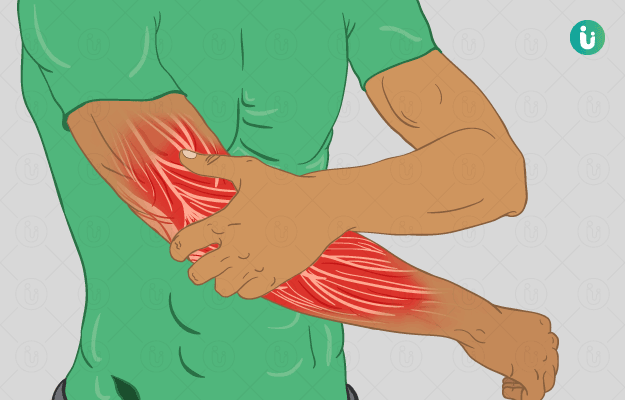How to Find Relief from Muscle Pain caused by Air Conditioning?
Introduction:
We’ve all experienced muscle pain at some point or other in our lives. We have always thought probably the increasing work stress, our sedentary lifestyles and lack of exercise could be the main reasons. But, have you ever wondered if your air conditioning could be the culprit?
In this blog post, we’ll explore the relationship between muscle pain and air conditioning, uncovering the truth behind this common concern. Not only that, we’ll delve into the reasons why muscle pain occurs due to air conditioning. We will also identify the muscles most affected by cooling, and provide practical tips on how to prevent and alleviate this discomfort. So let’s dive in!
Is Muscle Pain Caused by Air Conditioning?
Contrary to popular belief, air conditioning itself does not directly cause muscle pain. Yes, you read that just right. Muscle pain, also known as myalgia, can have a number of various causes. Some of them include overexertion, poor posture, or underlying medical conditions.
However, spending extended periods in air-conditioned environments can increase or trigger muscle pain in some individuals. Understanding the root cause and the factors involved can help us find effective ways to manage and prevent this discomfort.
Why Muscle Pain Occurs Due to Air Conditioning?
Muscle pain is not directly related to the usage of air conditioners but rather, a lot of other relevant factors which can contribute to muscle aches. Let’s look at some of the most common reasons which can cause muscle pains in any individual:
Temperature Fluctuations
One of the most common reasons why air conditioner usage can be related to muscle pain is due to rapid changes in temperature. It can lead to muscle stiffness and tension. When moving from a warm environment to a heavily air-conditioned space, the sudden drop in temperature can cause the muscles to contract unexpectedly, resulting in discomfort and pain.
Reduced Humidity
The use of Air Conditioners often reduces the humidity levels in indoor spaces. What it does is that due to low humidity, muscles start to get stiff and crampy due to dehydration. This discomfort, although not directly caused by the air conditioner, can be assumed as another reason for muscle cramps due to air conditioner usage.
Prolonged Inactivity
Air-conditioned environments can sometimes be so comfortable and cosy that we find ourselves staying sedentary for extended periods. Lack of movement can contribute to muscle stiffness and pain, especially in areas where we hold tension, such as the neck, shoulders, and lower back.
Which Muscles are Most Affected by Air Conditioning?
While muscle pain can occur in various parts of the body, certain muscle groups are more susceptible to discomfort caused by air conditioning:
Neck and Shoulders
Prolonged exposure to cold air can cause the muscles in the neck and shoulders to tighten and become stiff, which can be the leading cause for pain and result in reduced mobility.
Back Muscles:
Sitting in one position for a long time in an air-conditioned environment can strain the muscles in the back, particularly the lower back. This can result in lower back pain and discomfort, which can cause quite a hindrance in day to day movements and activities.
Preventing Muscle Pain Caused by Air Conditioning:
Usage of air conditioners is a necessity in hot and sweaty summers, but there can be ways to avoid getting muscular pains because of air conditioners.
We have compiled some of the most useful tips for you to avoid getting any sort of discomfort while staying all cool and cosy in the summer. Let’s discuss them each in detail:
Regulating Air Conditioner Cooling
Adjusting the air conditioner temperature and airflow can help minimise muscle pain. Opt for a moderate cooling setting rather than extreme cold. Consider using a fan to circulate the air and prevent it from blowing directly onto your body.
Avoid Sudden Temperature Change
As discussed above, a sudden change in temperature can result in contraction and muscular cramps. It is advised to stay in a moderately cool temperature and avoid sudden drop or increase in temperatures. Letting your body adjust gradually to temperature change and not having severe temperature changes can be one effective way to avoid muscle cramps.
Stretching and Movement Breaks
Take regular breaks from sitting or staying in one position. Engage in gentle stretching exercises to relieve tension in the muscles. Simple neck and shoulder rolls, back stretches, and walking can help prevent muscle stiffness and pain.
Muscular Therapy
If muscle pain persists, seeking professional help from a physical therapist or a doctor can provide relief. They can identify if there is any underlying issues and provide targeted treatment to alleviate discomfort.
Conclusion
While air conditioning itself may not directly cause muscle pain, it can certainly contribute to its occurrence or exacerbation. Understanding the reasons behind muscle pain due to air conditioning allows us to take proactive steps in managing and preventing this discomfort.
By regulating air conditioner cooling, taking regular movement breaks, and seeking muscular therapy when necessary, we can find relief and enjoy the benefits of a comfortable indoor environment without experiencing unnecessary pain. Stay mindful of your body’s needs, and remember to prioritise your well-being in any environment you find yourself in.

